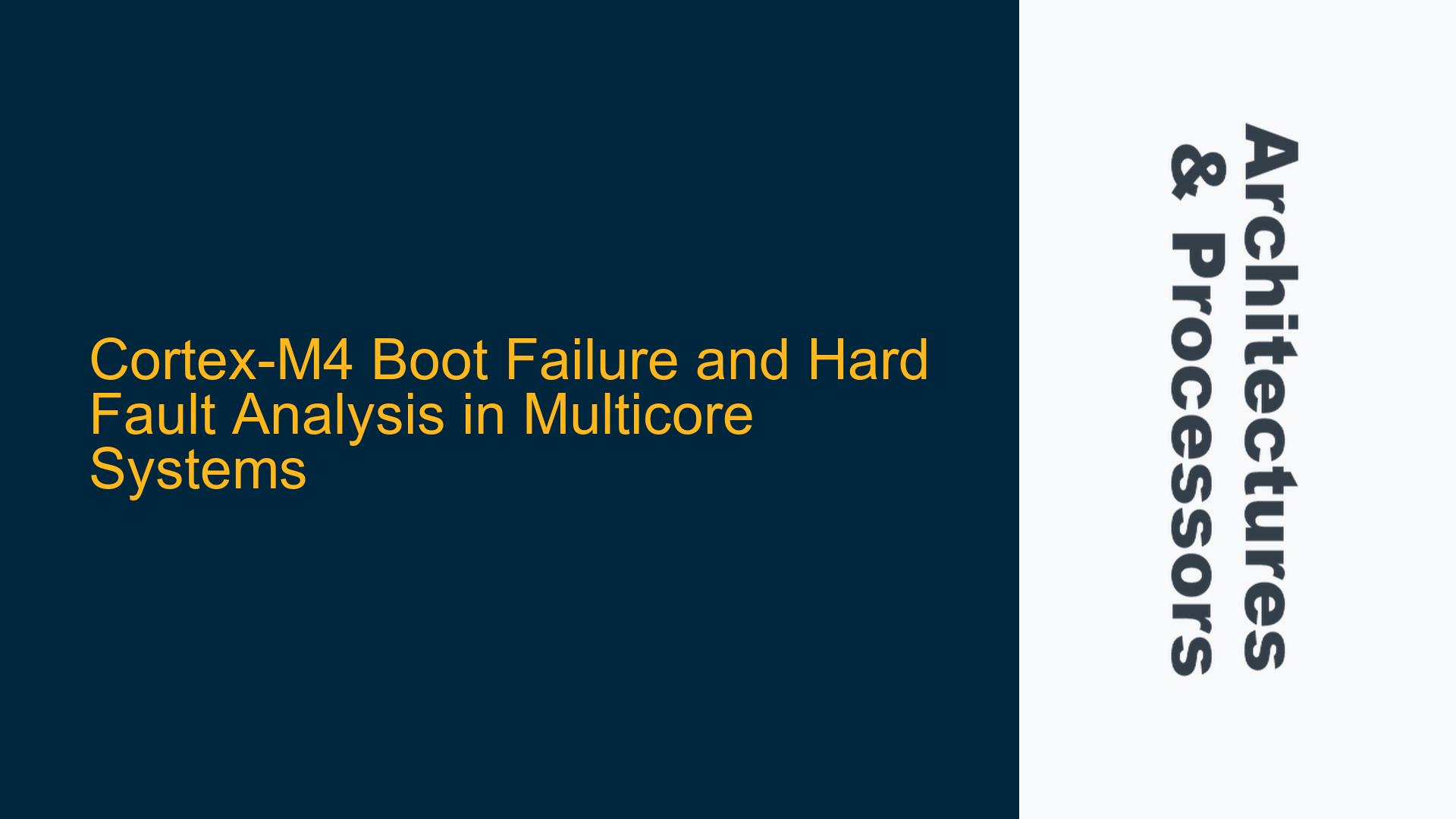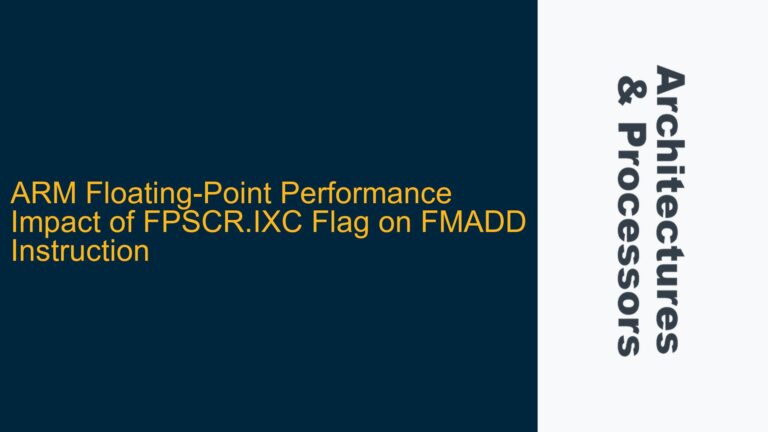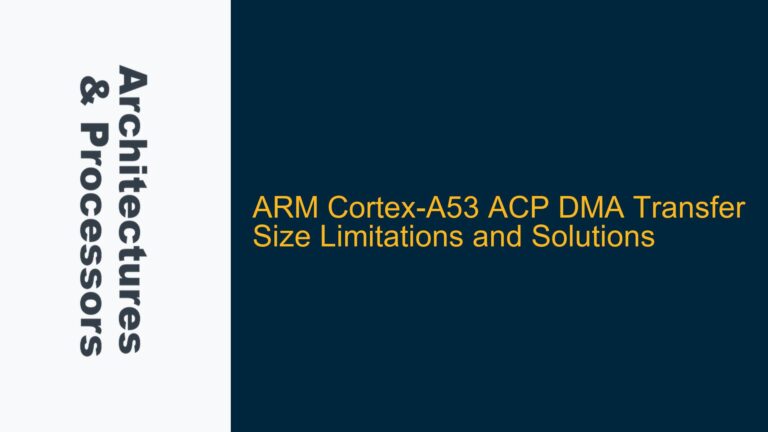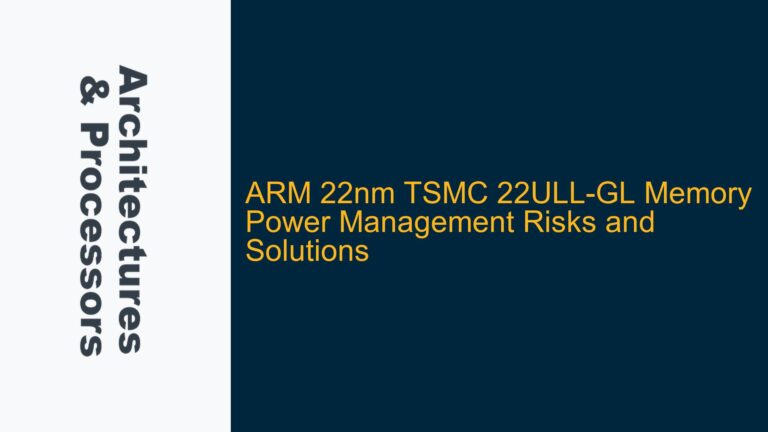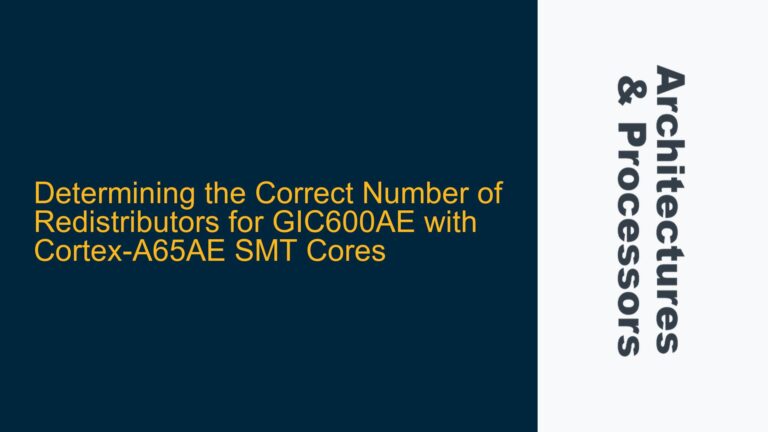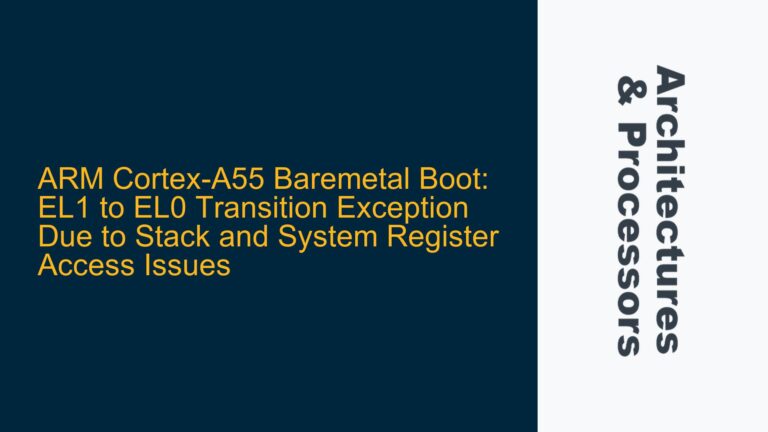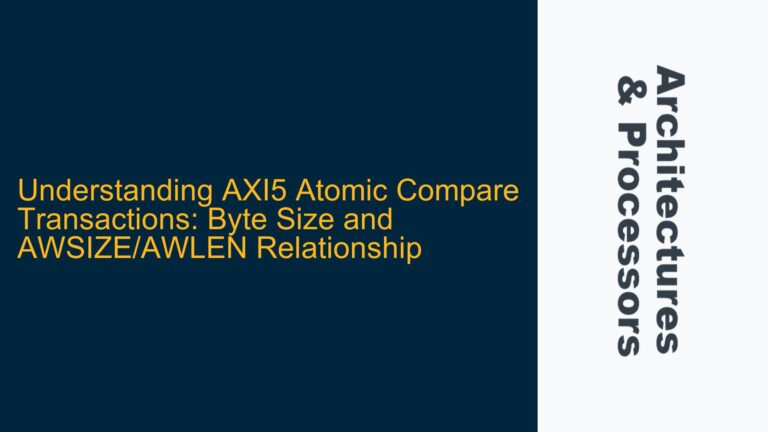Cortex-M4 Bootloader Infinite Loop and Hard Fault Generation
The issue at hand involves a Cortex-M4 slave core in a multicore system failing to boot reliably. The master core loads the application for the Cortex-M4 slave core, which is expected to execute the boot file (c_int00) and then jump to the main application. However, the system exhibits inconsistent behavior across multiple reboots. The observed symptoms include:
- The Cortex-M4 core entering an infinite loop within the boot file, preventing the jump to the main application.
- The Cortex-M4 core jumping to the main application but subsequently generating a hard fault due to accessing an invalid memory address, as indicated by the Program Counter (PC) pointing to an unknown address and the Bus Fault Status Register (BFSR) and Usage Fault Status Register (UFSR) showing values of
0x01and0x02, respectively. - The system occasionally booting successfully without any errors.
This erratic behavior suggests underlying issues in the boot process, memory initialization, or inter-core communication. The hard fault generation, in particular, points to potential memory corruption, misaligned data access, or improper exception handling.
Memory Initialization Issues and Interrupt Handling During Boot
The root causes of the described behavior can be traced to several potential areas:
Improper Memory Initialization
The Cortex-M4 core relies on the master core to load its application code into memory. If the memory regions (such as Flash, SRAM, or shared memory) are not properly initialized or if there are timing issues in the memory loading process, the Cortex-M4 core may attempt to execute invalid or corrupted instructions. This can result in the core either entering an infinite loop or generating a hard fault due to accessing an invalid address.
Pending Interrupts During Reset
When the system is reset or power-cycled, interrupts that were pending before the reset may remain active. If these interrupts are not properly cleared or disabled during the boot process, they can trigger unexpected exception handling, leading to a hard fault. This is particularly relevant in multicore systems where interrupt sources may be shared or managed by the master core.
Bootloader and Application Code Misalignment
The bootloader (c_int00) and the main application must be properly aligned in terms of memory mapping and execution flow. If the bootloader does not correctly set up the stack pointer, vector table, or other critical system registers, the Cortex-M4 core may fail to transition to the main application. Additionally, if the application code is not correctly linked or if there are discrepancies in the memory layout, the core may attempt to execute code from an invalid memory region.
Shared Resource Contention
In multicore systems, shared resources such as memory buses, peripherals, or inter-core communication channels can lead to contention issues. If the master core and the Cortex-M4 core attempt to access shared resources simultaneously without proper synchronization, it can result in data corruption or inconsistent behavior during the boot process.
Debugging Memory Initialization and Implementing Robust Boot Sequence
To address the issues described above, the following troubleshooting steps and solutions are recommended:
Verify Memory Initialization and Loading Process
- Check Memory Regions: Ensure that the memory regions used by the Cortex-M4 core (Flash, SRAM, shared memory) are correctly initialized by the master core. Use a debugger to inspect the memory contents after loading the application code.
- Validate Timing: Verify that the master core completes the memory loading process before releasing the Cortex-M4 core from reset. Introduce delays or synchronization mechanisms if necessary to ensure proper timing.
- Memory Protection Units (MPU): Configure the MPU on the Cortex-M4 core to protect critical memory regions and prevent unauthorized access. This can help identify memory access violations during the boot process.
Clear Pending Interrupts and Configure Exception Handling
- Disable Interrupts: Ensure that all interrupts are disabled during the boot process. Use the
__disable_irq()function or equivalent to disable interrupts before starting the Cortex-M4 core. - Clear Interrupt Pending Bits: Manually clear the pending bits for all interrupt sources in the Nested Vectored Interrupt Controller (NVIC) before enabling interrupts. This ensures that no stale interrupts are pending after a reset.
- Hard Fault Handler: Implement a robust hard fault handler to capture and analyze hard fault events. Use the Fault Status Registers (BFSR, UFSR) to diagnose the cause of the fault and log relevant information for debugging.
Align Bootloader and Application Code
- Stack Pointer Initialization: Ensure that the bootloader correctly initializes the stack pointer for the Cortex-M4 core. Verify that the stack pointer is set to a valid memory region before jumping to the main application.
- Vector Table Configuration: Confirm that the vector table is correctly configured and points to valid exception handlers. Use the Vector Table Offset Register (VTOR) to specify the location of the vector table if it is not located at the default address.
- Linker Script Validation: Review the linker script to ensure that the memory layout is consistent with the hardware configuration. Verify that the application code is correctly linked and that there are no overlaps or gaps in the memory regions.
Synchronize Shared Resource Access
- Inter-Core Communication: Implement a robust inter-core communication mechanism to synchronize access to shared resources. Use semaphores, mutexes, or hardware-based synchronization primitives to prevent contention.
- Resource Locking: Introduce resource locking mechanisms to ensure that only one core accesses a shared resource at a time. This can be achieved using atomic operations or hardware-supported locking features.
- Debugging Shared Memory: Use a debugger to monitor access to shared memory regions and identify any conflicts or corruption. Implement checksums or error-detection codes to validate the integrity of shared data.
Additional Debugging Techniques
- GPIO Debugging: Use GPIO pins to trace the execution flow of the Cortex-M4 core. Toggle GPIO pins at key points in the bootloader and application code to visually confirm the execution path.
- Printf Debugging: Insert
printf()statements in the bootloader and application code to log the execution flow and variable values. This can help identify where the code deviates from the expected behavior. - Watchdog Timer: Configure a watchdog timer to reset the system if the Cortex-M4 core becomes unresponsive. This can help recover from infinite loops or deadlocks during the boot process.
By systematically addressing these areas, the reliability of the Cortex-M4 boot process can be significantly improved, reducing the occurrence of infinite loops and hard faults. The use of debugging tools and techniques will provide valuable insights into the root causes of the issues and enable the implementation of robust solutions.
